So you’ve identified a job you want. Maybe from a friend, or LinkedIn, or just searching around online. How do you proceed? Send them your resume right? WRONG.
Well, you’re kind of right, but that’s not the first thing you do. Lets first discuss what a resume isn’t:
What A Resume Isn’t
- A Life History (that’s an Autobiography)
- A Work History (that’s an CV – Curriculum Vitae)
- An opportunity to lie
- A lengthy, generic document that you copy and send to everyone
What A Resume Is
- A sales pitch
- A way to show your strengths
- A short, customized document you send to one employer
Let’s go a little bit more in depth. A common misconception is that you should list every job you’ve worked, not the case. Why not? The more information the better right? Lets draw a little bit of an analogy.
Selling Yourself Effectively
You’re essentially selling your skills for a price (hourly rate or salary), just like a store is selling a TV. What if there was no marketing around the TV. It just sitting there in the box, with the 100-page instruction manual sitting on top. The instruction manual has all the information that any marketing materials would and then some. I mean, more information is better right? This is essentially what you do when you send an employer a 5 page resume with everything from the job washing cars you had when you were 15, to your last job as a CIO.
Lets take the analogy a little bit further. What does a store do? They might have the instruction manual around somewhere, but they put a short list of eye-popping features and have the TV displaying some Hi-Def video. That’s what your resume should do for you.
What a Job Recruiter Does
Think about the organization’s role in the process. They need to quickly and efficiently determine the best candidate and hire them. This means quickly sorting through resumes and filtering out the ones that aren’t viable candidates. They sort them into the “Interview Pile” and the trashcan.
A recruiter for a company has a stack of resumes on his desk when his friend walks in. They talk for a few minutes and the friend starts to leave. As he’s leaving he sees the recruiter take half of the stack of resumes and throw them straight into the garbage can. The friend exclaims “Why are you throwing away half of those resumes’?! You haven’t even read them yet!”. The recruiter simply responds “I don’t want any of the unlucky ones working here.”
Now granted, the above is a joke, but a lot of times employers look for ANYTHING to exclude you. You have to be perfect AND set yourself apart. Lets talk about how resume paper came into existence. At some point someone needed an edge over the 20 other applicants for a job. They decided that instead or printing their resume on some standard paper, they would print it on something a bit fancier like card stock. This different caught the recruiters eye and he got put in the “Interview Pile”. Eventually enough people started setting themselves apart that resume paper is now a requirement. What was a bonus maybe fifty years ago is now the standard, and if you were to hand in a resume on non-resume paper today it would likely get thrown away.
Your goal is to catch their eye and be able to easily establish if you’re a viable candidate. If a recruiter gets frustrated or overloaded with content (like a 5 page resume), they’re not going to read your entire resume. They’re going to skim it and make a quick determination.
Below are some suggestions. I put suggested in the title, because no one set of rules is going to solve all situations. That being said, these suggestions should be considered for every resume and evaluated. They are followed by a short explanation of why or why not.
Suggested Do’s
- Strongly consider a single one-sided page – Don’t want to overload a recruiter, they won’t take the time to read two pages of detail
- Unique layout (No Word templates) – Unorigional resume and you’ll blend in with the crowd.
- Customize for each job – Only relevant experience if you have too much for a single page – Again, you want the recruiter to quickly see if you’re competent. They don’t care if you used to wash cars.
- Set yourself apart in a professional way – Catches the recruits eye, maybe something techy like a QR code for your website or something.
- Make your previous jobs sound impressive, but don’t lie – See below
Suggested Don’ts
- Spelling mistakes – No attention to detail, doesn’t care to be thorough
- Lying – Don’t lie, it won’t help you in the long run, could even hurt you if you want to use this job as a future reference.
- Pictures/Portraits – Does it really matter? Unless you’re looking to get the job based on looks, it will only hurt you. You could look like someone they don’t like, maybe an ex.
- Big blocks of text – Hard to read, can appear as dense or boring
- Objective section – Why? The objective is to get a job. You know that. They know that. It’s a wasted half-inch on your page. You’ll need all the space you can get.
- Margins – Don’t change the margins much, leave them the default 1″, maybe if you need that one extra word you can change it to 0.95″ or something.
Lying vs Embellishment and Tweaking
Lying is bad. It will catch up to you somehow. Embellishment on the other hand is definitely OK, as long as everything you’re saying is truthful. Stretch the truth a small amount can be OK. Here are a few examples of the proper way to embellish:
- “Counted money in the cash register every night” vs “Maintained the financial integrity of the cash drawer”
- “Was a server for a cafe” vs “Provided an enjoyable eating experience for patrons by suggesting drink and food items, and responding to requests in a timely manner”
- “Phone tech support for an ISP” vs “Provided tier 3 telephone support for AT&T DSL’s western region”
- “Managed Active Directory” vs “Responded to and fulfilled requests for user modifications in Active Directory”
In each of those you’re saying the same thing, maybe providing a little more information (truth), but it sounds a lot more impressive and important. Fancy it up, to a point. No need to spray out dozens of complicated sounding acronyms. If you’re in the IT industry, anyone who will be looking at your resume probably knows what “IP” is, so you can put “IP” instead of “Internet Protocol”. Someone may not know what MCSM means, so it would be a good idea to be “Microsoft Certified Solutions Master”.
Example Resume
Lets take a look at the example resume below (click for larger):
What do you first notice about the resume? It has four major areas: Contact Information, Education, Professional Experience, Skills. There is a lot of information on the page but it is well organized into sections, subsections, and bullets. It does not feel daunting to read, you can easily identify the 4 entries under Professional Experience. Obviously I have edited the document to not include organization names and locations, but you can still see some of the “embellishing”, or making it sound official and maybe a little bit fancy.
Note that I created this resume from scratch using tables in word. I didn’t stick with one font size, but used different sizes for the titles, subtitles, content. I also used bolding and italics to emphasize certain areas. I’m particularly fond of the “small caps” feature of Microsoft Word, you can see this in the words “Education”, “Professional Experience”, and “Skills”. Even though they are the same size as “Redacted Univerity”, the fact that they are small caps, bolded, and italicized makes them stand out as “official titles”.
There are no spelling mistakes, no lies, no large blocks of text, and this was customized for the specific job I sent this in at. The layout took me maybe a half hour to develop and another hour or so to write the content. This resume has also been developed over many revisions and tweaks, each time getting a little bit better.
One thing that I might consider adding is a QR code or something similar at the top to the right of the phone/email/website. It will catch eyes, and if someone decides to pull out the Barcode Scanner app on their phone that even further sets you apart.
The Cover Letter
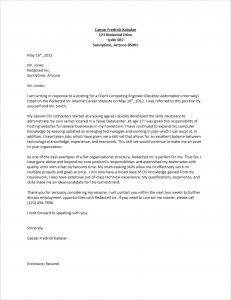 So now that you have your resume set and looking good, it is time to write your cover letter. A cover letter is NOT optional anymore. It’s purpose is to put a more personal feel into your application and connect you, the company, and your resume together into one thought. A good mix is to hit these topics, in this general order:
So now that you have your resume set and looking good, it is time to write your cover letter. A cover letter is NOT optional anymore. It’s purpose is to put a more personal feel into your application and connect you, the company, and your resume together into one thought. A good mix is to hit these topics, in this general order:
First Paragrah: Introduce yourself. State the job you’re applying for and how you found out about it (newspaper, craigslist, a current employee, etc).
Second/Third Paragraphs: Talk briefly about your personal and professional history. Two paragraphs max, be sure at hit points that would make you a good candidate (natural skill, attention to detail, etc). This is the place to briefly state beneficial personality traits that don’t belong on your resume. Essential: This is who I am, these are the skills and personality traits that would make me a good fit for your organization.
Fourth Paragraph: Thank you message and some contact information like a phone number.
The example to the left was at the end of my internship when I was attempting to get a full time position. A cover letter should be HEAVILY customized for each organization. While writing your cover letter it is a very good idea to do some research about the organization so you can connect yourself to their philosophies and unique characteristics. For example, if you know they support their employees’ efforts in doing volunteer work, you might throw in a sentence about volunteer work you do.
I hope this has provided a good guide for job seekers to get their name out there and noticed. In the next installment (Part 3: Interviewing) we will cover all aspects of the job interview. Highlights will include dress, attitude, illegal questions, proper responses to the hard questions. Thanks for reading and feel free to leave questions in the comments and I will be more than happy to answer them!
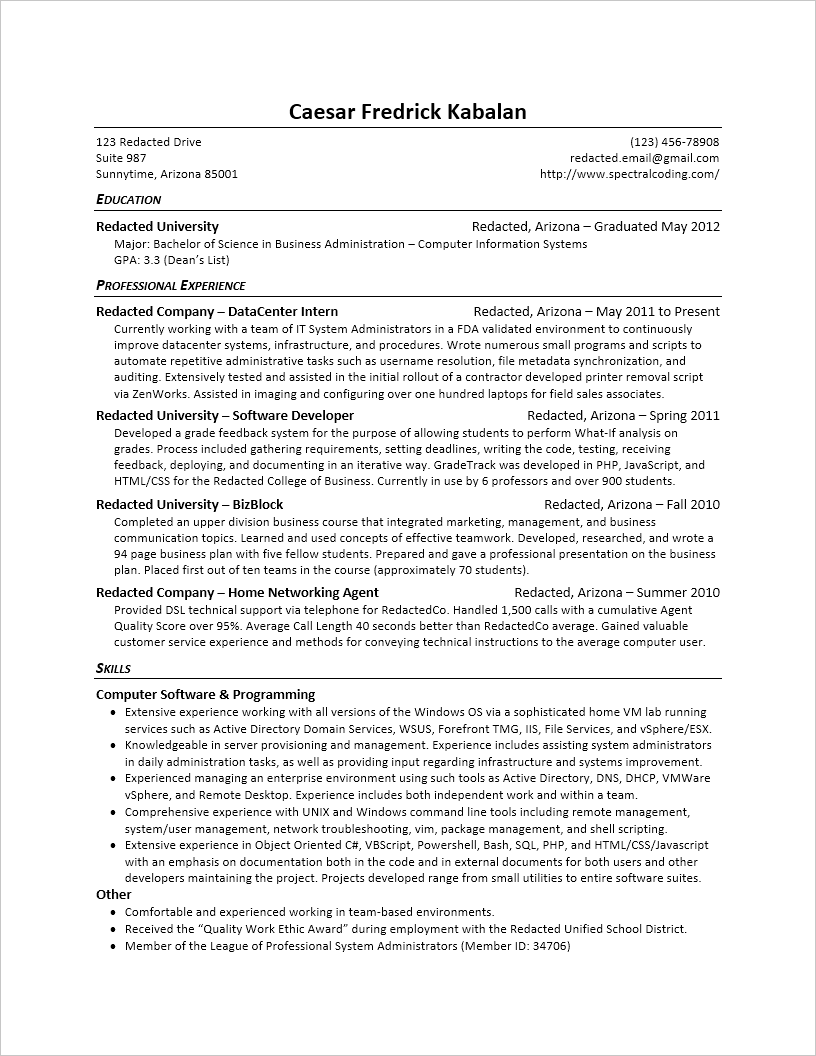
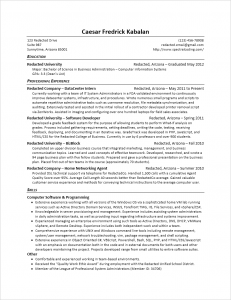
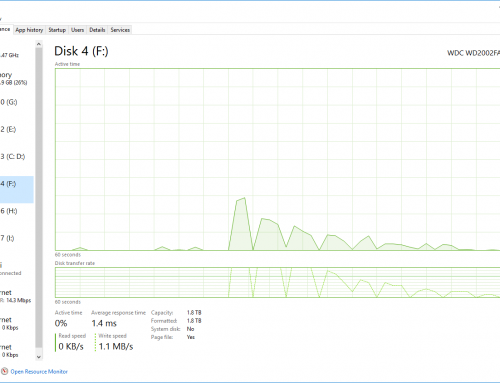
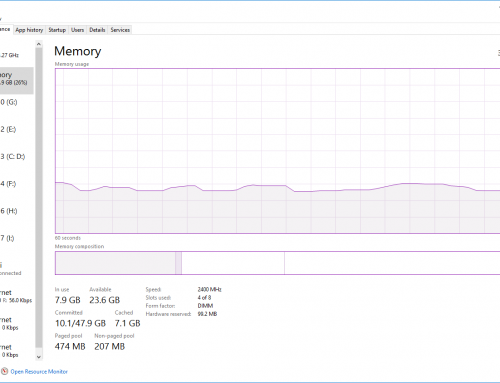
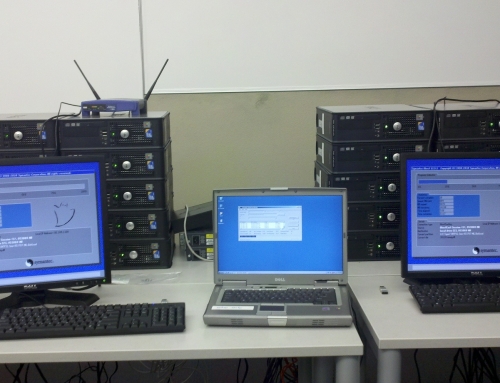
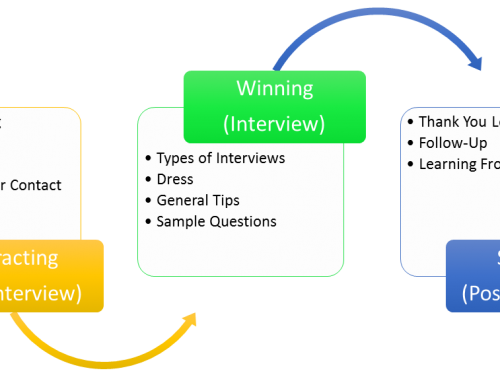
Leave A Comment